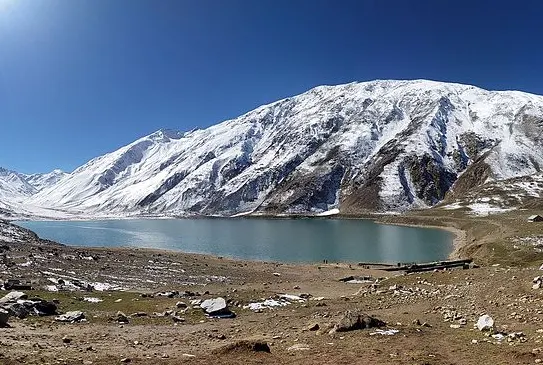
Over 5,000 Himalayan glaciers are at risk of flooding
About half of the total glacier mass in the Himalayan Mountains could melt by 2100
More than 5,000 glacier lakes in the Himalayan mountains are at risk of extensive flooding and could cause “catastrophic societal impacts” due to warming global temperatures, a new study finds.
The Himalayan mountains are home to some of the most striking geographic features on Earth, such as Mount Everest and the mysterious ‘Skeleton Lake’ in India, but the warming temperatures are creating challenges for these locations, such as the increasing frequency of dead bodies turning up on Mount Everest due to melting glaciers.
The glacier lakes are dammed by unstable moraines, which are soil and rock debris that was left behind by moving glaciers. Increased melting of glaciers in the Himalayas could trigger the collapse of the moraines, which could result in glacier lake outburst floods that could travel over 100 km downstream. Since these glacial lakes are located in relatively rural areas, flooding could occur with little to no warning and approximately 220 million people in the Himalayan region and adjacent mountain ranges are at risk.

Saif ul Malook Lake, Pakistan. Credit: Wikimedia Commons
In the past three decades, glacier lake outburst floods have occurred at an average of 1.3 times per year. The researchers conducted 5.4 billion simulations to project future glacier melt in the Himalayas and found that the moraines of over 5,000 lakes will become increasingly unstable as temperatures rise. Lakes with the largest volume of water have the highest risk of glacial lake outburst floods.
A 1.5°C rise in global temperatures by the end of this century has the potential to melt half of the Himalayan glacier mass by 2100 and the models indicate that this could create space for an additional 16,000 meltwater lakes, which would be a 6-fold increase in the total lake volume.
Both the daily and annual discharges of rivers within the Himalayan drainage network will increase due to warming atmospheric temperatures, and the recurrence interval for certain flooding events could become up to 90 per cent shorter by 2100. This means that a flooding event of a specific magnitude could occur once every ten years as opposed to once every 100 years, which has urgent implications for the growing population in the Himalayas, as well as current infrastructure and hydro-power projects.

